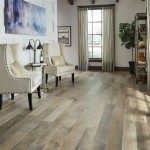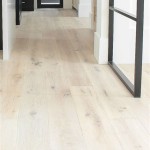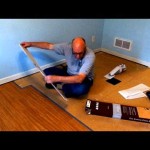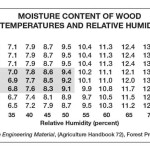Installing Vinyl Plank Flooring Over OSB: A Comprehensive Guide
Oriented strand board (OSB) is a commonly used subfloor material in residential construction due to its affordability and structural strength. However, installing vinyl plank flooring directly over OSB requires careful preparation and attention to detail to ensure a long-lasting and aesthetically pleasing result. This article will provide a comprehensive guide to installing vinyl plank flooring over OSB, covering the necessary preparation steps, installation techniques, and potential challenges.
Vinyl plank flooring is a popular choice for its durability, water resistance, and ease of installation. Its versatility allows it to mimic the look of hardwood, tile, or stone at a fraction of the cost. When properly installed over a prepared OSB subfloor, vinyl plank flooring can provide a durable and attractive flooring solution for various rooms in a home.
Key Point 1: OSB Subfloor Preparation
The success of any flooring installation heavily relies on the condition of the subfloor. Proper preparation of the OSB subfloor is crucial for ensuring the longevity and stability of the vinyl plank flooring. This involves thorough inspection, cleaning, and leveling.
Inspection: The first step is to thoroughly inspect the OSB subfloor for any signs of damage. This includes checking for water damage, warping, delamination, or any existing damage caused by pests. Any damaged sections of the OSB must be replaced before proceeding with the installation. Water-damaged OSB can lead to mold growth and structural instability, which will compromise the vinyl plank flooring.
Cleaning: Once the inspection is complete, the OSB subfloor needs to be thoroughly cleaned. This involves removing any debris, dust, dirt, nails, staples, or adhesive residue. A shop vacuum is ideal for removing loose debris. For stubborn residue, a scraper or putty knife may be necessary. It is important to ensure the surface is completely clean as any debris can prevent the vinyl planks from properly adhering or interlocking, leading to unevenness or gaps.
Leveling: Ensuring a level subfloor is paramount. Vinyl plank flooring, while flexible to some extent, will telegraph any imperfections in the subfloor. This means any dips, humps, or unevenness will be visible on the surface of the installed vinyl plank flooring. A long level or straight edge can be used to identify any uneven areas. Any significant dips or low spots should be filled with a self-leveling compound specifically designed for wood subfloors. Allow the self-leveling compound to dry completely according to the manufacturer's instructions before proceeding. High spots can be sanded down using a floor sander or hand sander. A smooth and level surface is critical for proper installation.
Securing the Subfloor: Examine the OSB to ensure it is securely fastened to the floor joists. Loose or squeaky OSB panels need to be re-secured using screws designed for wood subfloors. Drive the screws in at consistent intervals along the joists. This will help to eliminate movement and prevent squeaking after the vinyl plank flooring is installed.
Acclimation: Like many flooring materials, vinyl plank flooring requires acclimation to the environment in which it will be installed. This means allowing the planks to sit in the room for at least 48 to 72 hours before installation. This allows the planks to adjust to the temperature and humidity levels, minimizing expansion and contraction after installation. Follow the manufacturer's recommendations for acclimation time and temperature.
Underlayment (Optional): While not always necessary, installing an underlayment between the OSB subfloor and the vinyl plank flooring can provide several benefits. An underlayment can add cushioning, reduce noise transmission, and provide an additional layer of moisture protection. Choose an underlayment specifically designed for vinyl plank flooring and OSB subfloors. Ensure the underlayment is properly installed according to the manufacturer's instructions.
Key Point 2: Vinyl Plank Flooring Installation Techniques
Proper installation techniques are essential for achieving a professional-looking and long-lasting result. This involves careful planning, precise cutting, and secure installation of the vinyl planks.
Planning the Layout: Before beginning the installation, carefully plan the layout of the vinyl planks. Start by determining the direction in which the planks will be laid. Typically, planks are installed parallel to the longest wall in the room. However, consider the direction of natural light and the overall aesthetic you are trying to achieve. Also, plan for the placement of the first row of planks, ensuring it is straight and aligned with the wall. Use a chalk line to create a straight reference line. Remember to leave an expansion gap between the planks and the walls, typically ¼ inch to ⅜ inch, to allow for expansion and contraction due to changes in temperature and humidity. This gap will be covered by baseboards or trim.
Cutting the Planks: Vinyl plank flooring is relatively easy to cut using a utility knife, a scoring tool, or a flooring cutter. For straight cuts, use a utility knife and a straight edge to score the plank several times and then snap it along the score line. For more complex cuts, such as around door frames or pipes, a jigsaw or a coping saw may be necessary. Always wear safety glasses when cutting vinyl plank flooring. Accuracy in cutting is crucial for a seamless and professional-looking installation.
Installing the Planks: Most vinyl plank flooring uses a click-lock system, which allows the planks to be easily interlocked without the need for glue. Start by placing the first row of planks along the reference line, ensuring the tongue or groove side is facing the wall. Interlock the planks by angling them together and pressing them down until they click into place. Use a tapping block and a hammer to gently tap the planks together, ensuring a tight and secure fit. Continue installing the planks row by row, staggering the end joints to create a more natural and visually appealing look. The staggering pattern also adds to the overall strength of the flooring. For planks that require adhesive, follow the manufacturer's instructions for applying the adhesive and pressing the planks into place.
Working Around Obstacles: When installing vinyl plank flooring around obstacles, such as door frames, pipes, or cabinets, careful planning and precise cutting are essential. Use a template or a combination square to transfer the shape of the obstacle onto the plank. Then, use a jigsaw or a coping saw to cut the plank to fit around the obstacle. Leave a small expansion gap around the obstacle to allow for movement.
Transitions: Use transition strips to create a smooth and seamless transition between the vinyl plank flooring and other types of flooring, such as carpet, tile, or hardwood. Transition strips are available in various styles and materials to match the vinyl plank flooring and the adjacent flooring. Install the transition strips according to the manufacturer's instructions.
Key Point 3: Addressing Potential Challenges
While installing vinyl plank flooring over OSB is a manageable project for many homeowners, certain challenges can arise. Being aware of these potential issues and knowing how to address them is crucial for a successful installation.
Moisture Issues: OSB is susceptible to moisture damage, which can lead to warping, swelling, and mold growth. If the OSB subfloor is exposed to excessive moisture, it is essential to address the source of the moisture and allow the OSB to dry completely before installing the vinyl plank flooring. Consider installing a moisture barrier between the OSB subfloor and the vinyl plank flooring, especially in areas prone to moisture, such as bathrooms or kitchens.
Uneven Subfloor: As mentioned earlier, an uneven subfloor can cause problems with vinyl plank flooring. If the subfloor is significantly uneven, it may be necessary to use a self-leveling compound to create a smooth and level surface. Failure to address an uneven subfloor can result in an unprofessional appearance, premature wear, and potential damage to the vinyl plank flooring.
Squeaky Subfloor: A squeaky subfloor can be annoying and can indicate underlying issues with the OSB or the floor joists. Before installing the vinyl plank flooring, address any squeaks by securing the OSB panels to the floor joists with screws. In some cases, it may be necessary to add shims between the floor joists and the subfloor to eliminate the squeaking. Ignoring a squeaky subfloor will not make the squeak disappear. In fact, it may become more pronounced with the addition of new flooring.
Gaps Between Planks: Gaps between vinyl planks can occur due to improper installation, inadequate acclimation, or changes in temperature and humidity. Ensure the planks are properly interlocked and that the subfloor is level. Maintain consistent temperature and humidity levels in the room to minimize expansion and contraction. Use a tapping block and hammer to ensure a tight fit between the planks. If gaps appear after installation, consider using a color-matched caulk or filler to fill the gaps.
Adhesive Issues (If Applicable): If using adhesive, ensure the correct type of adhesive is used for vinyl plank flooring and OSB subfloors. Apply the adhesive according to the manufacturer's instructions and allow it to cure completely before allowing foot traffic on the flooring. Failure to use the correct adhesive or to apply it properly can result in the vinyl planks lifting or shifting.
By following these guidelines and taking the necessary precautions, installing vinyl plank flooring over OSB can be a successful DIY project that adds value and beauty to any home. Careful preparation and attention to detail are key to achieving a professional-looking and long-lasting result.

Can You Install Hardwood Flooring Over Osb Board 2 Factors

How To Install Glue Down Luxury Vinyl Plank Flooring On Osb Sub Floor

How To Install Glue Down Luxury Vinyl Plank Flooring On Osb Sub Floor

How To Install Glue Down Luxury Vinyl Plank Flooring On Osb Sub Floor

How To Install Vinyl Plank Flooring On Plywood Floor

How To Install Glue Down Luxury Vinyl Plank Flooring On Osb Sub Floor

How To Level A Plywood Or Osb Subfloor Using Asphalt Shingles Construction Felt Wood Floors Wide Plank Flooring

Easy Ways To Dry Osb Subfloors 12 Steps With S Wikihow

Using Osb As Your Primary Floor Silvaris

How To Install Vinyl Plank Flooring In A Bathroom Fixthisbuildthat
Related Posts








